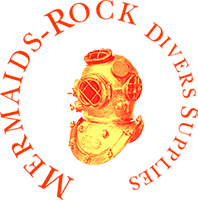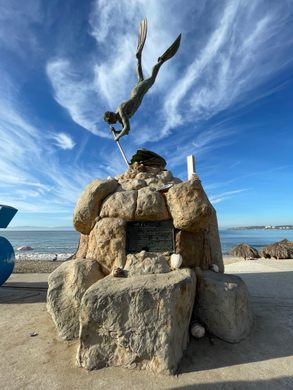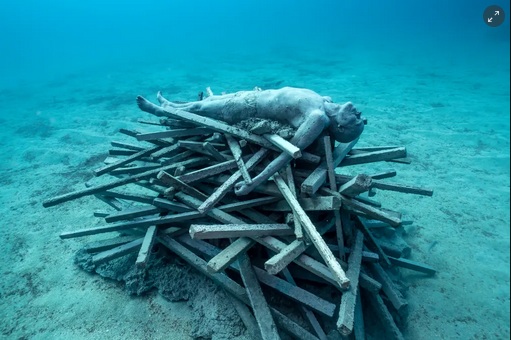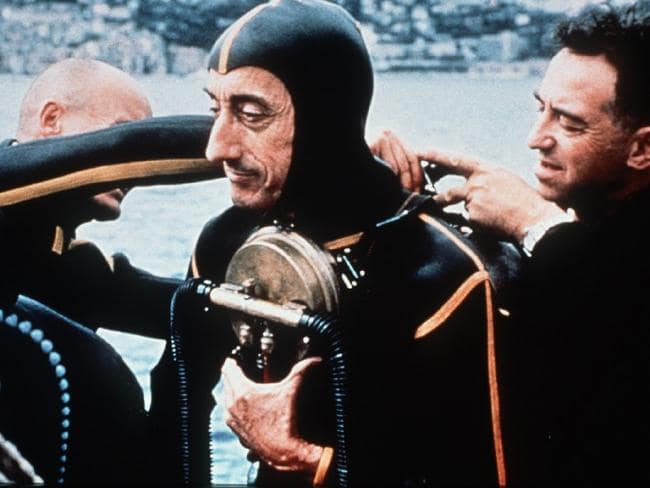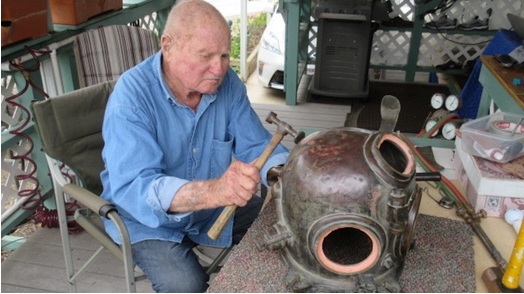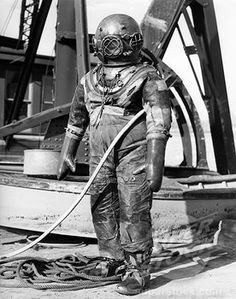
From early diving suits to hi-tech naval gear, The Diving Museum boasts a unique collection. ELLIE PILMOOR takes a look around.
Set in a Victorian battery near the shoreline is an Aladdin's cave of diving history and equipment.
The Diving Museum, off Stokes Bay Road, in Gosport, is full of deep-sea suits, helmets, aqualungs and computers used by divers down the years.
With displays ranging from hi-tech gear used by the navy to the very first diving suits, the museum is one-of-a-kind.
And it isn't just the museum building that is full of diving history, as each of the guides have also got a story to tell too.
The volunteers have different backgrounds, ranging from a university lecturer to former Royal Navy clearance divers who would clear mines.
It is fantastic to know that we aren't just here for divers but for the wider community.
[Read More ...]
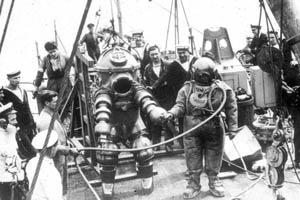
In order to perform dives to deepest of more than 300 feet a diver would have to use a Atmospheric Diving Suit (ADS) which is a suit that looks like a suit of armor, but actually is a complicated peace of technology that has pressure joints which allow movement to take place at great depths with the maintenance of the internal pressure of the suit which is atmosphere. The ADS can be safely used for dives up to 600 meters and it removes a lot of dangers to the diver like the need to decompress is not needed, no special gas mixtures are used, there are no dangers of nitrogen narcosis or decompression sickness. The deepest dives with breathing apparatus were preformed in these ADS suits for at around the depth of 40 meters nitrogen narcosis which is also called rapture of the deep kicks in nitrogen narcosis is caused by the narcotic effects of air's nitrogen at high pressure.
[Read More ...]

It may sound like strange preparation for someone in diving, but I was trained as a history teacher. And one of the things I learned was to value the contributions made by our predecessors in helping us become what and who we are today. Surely, unless we understand where we’ve been, we cannot possibly appreciate where we are. We’re products of history as much as we are the progeny of our parents. While this may sound like something straight out of History 101, the same logic applies to the history of diving. To understand where we are, we must know where we’ve been.
[Read More ...]
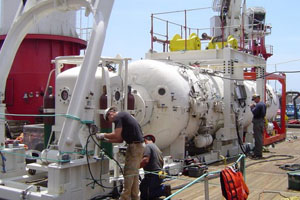
Saturation diving is a diving technique that allows divers to reduce the risk of decompression sickness ("the bends") when they work at great depths for long periods of time.
Decompression sickness occurs when a diver with a large amount of inert gas dissolved in the body tissues is decompressed to a pressure where the gas forms bubbles which may block blood vessels or physically damage surrounding cells. This is a risk on every decompression, and limiting the number of decompressions can reduce the risk.
[Read More ...]

The French part of the empire lost pounds 600,000 last year. The difficulties have been compounded by the deep obscurity of Cousteau's finances, a tangled net of private wealth and public and charitable activities.
[Read More ...]
 From early diving suits to hi-tech naval gear, The Diving Museum boasts a unique collection. ELLIE PILMOOR takes a look around.
Set in a Victorian battery near the shoreline is an Aladdin's cave of diving history and equipment.
The Diving Museum, off Stokes Bay Road, in Gosport, is full of deep-sea suits, helmets, aqualungs and computers used by divers down the years.
With displays ranging from hi-tech gear used by the navy to the very first diving suits, the museum is one-of-a-kind.
And it isn't just the museum building that is full of diving history, as each of the guides have also got a story to tell too.
The volunteers have different backgrounds, ranging from a university lecturer to former Royal Navy clearance divers who would clear mines.
It is fantastic to know that we aren't just here for divers but for the wider community. [Read More ...]
From early diving suits to hi-tech naval gear, The Diving Museum boasts a unique collection. ELLIE PILMOOR takes a look around.
Set in a Victorian battery near the shoreline is an Aladdin's cave of diving history and equipment.
The Diving Museum, off Stokes Bay Road, in Gosport, is full of deep-sea suits, helmets, aqualungs and computers used by divers down the years.
With displays ranging from hi-tech gear used by the navy to the very first diving suits, the museum is one-of-a-kind.
And it isn't just the museum building that is full of diving history, as each of the guides have also got a story to tell too.
The volunteers have different backgrounds, ranging from a university lecturer to former Royal Navy clearance divers who would clear mines.
It is fantastic to know that we aren't just here for divers but for the wider community. [Read More ...]
 It may sound like strange preparation for someone in diving, but I was trained as a history teacher. And one of the things I learned was to value the contributions made by our predecessors in helping us become what and who we are today. Surely, unless we understand where we’ve been, we cannot possibly appreciate where we are. We’re products of history as much as we are the progeny of our parents. While this may sound like something straight out of History 101, the same logic applies to the history of diving. To understand where we are, we must know where we’ve been. [Read More ...]
It may sound like strange preparation for someone in diving, but I was trained as a history teacher. And one of the things I learned was to value the contributions made by our predecessors in helping us become what and who we are today. Surely, unless we understand where we’ve been, we cannot possibly appreciate where we are. We’re products of history as much as we are the progeny of our parents. While this may sound like something straight out of History 101, the same logic applies to the history of diving. To understand where we are, we must know where we’ve been. [Read More ...]
 The French part of the empire lost pounds 600,000 last year. The difficulties have been compounded by the deep obscurity of Cousteau's finances, a tangled net of private wealth and public and charitable activities. [Read More ...]
The French part of the empire lost pounds 600,000 last year. The difficulties have been compounded by the deep obscurity of Cousteau's finances, a tangled net of private wealth and public and charitable activities. [Read More ...]

